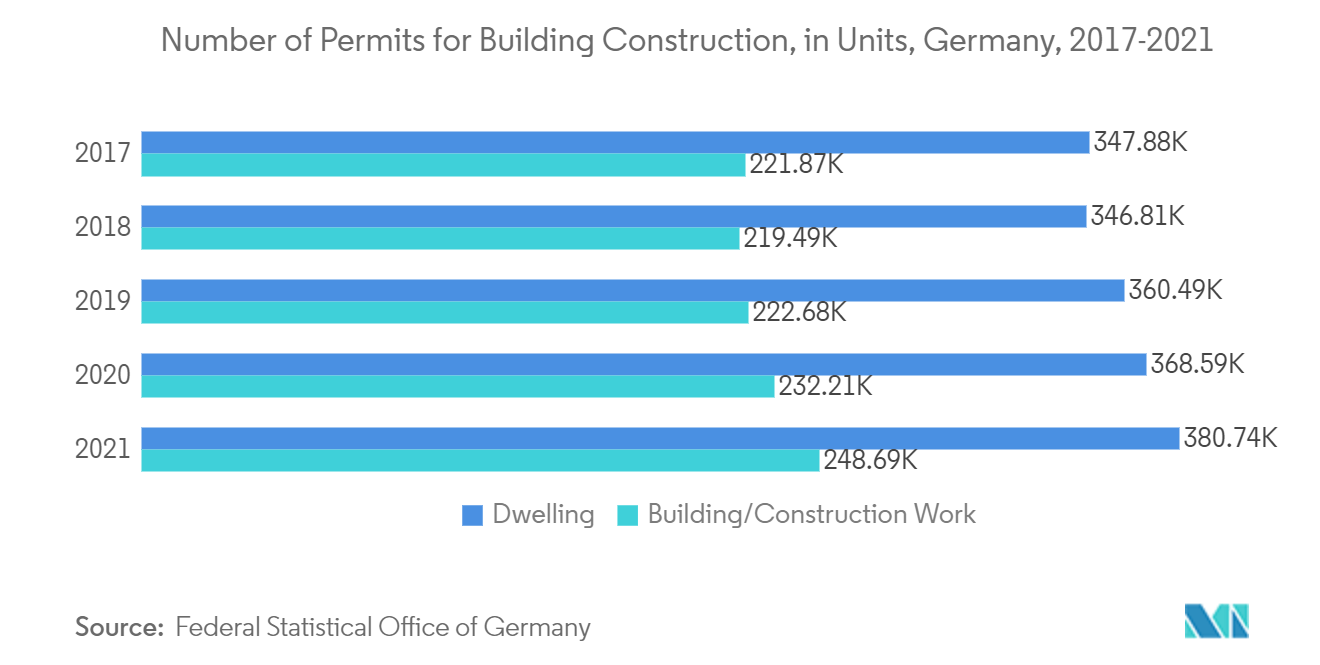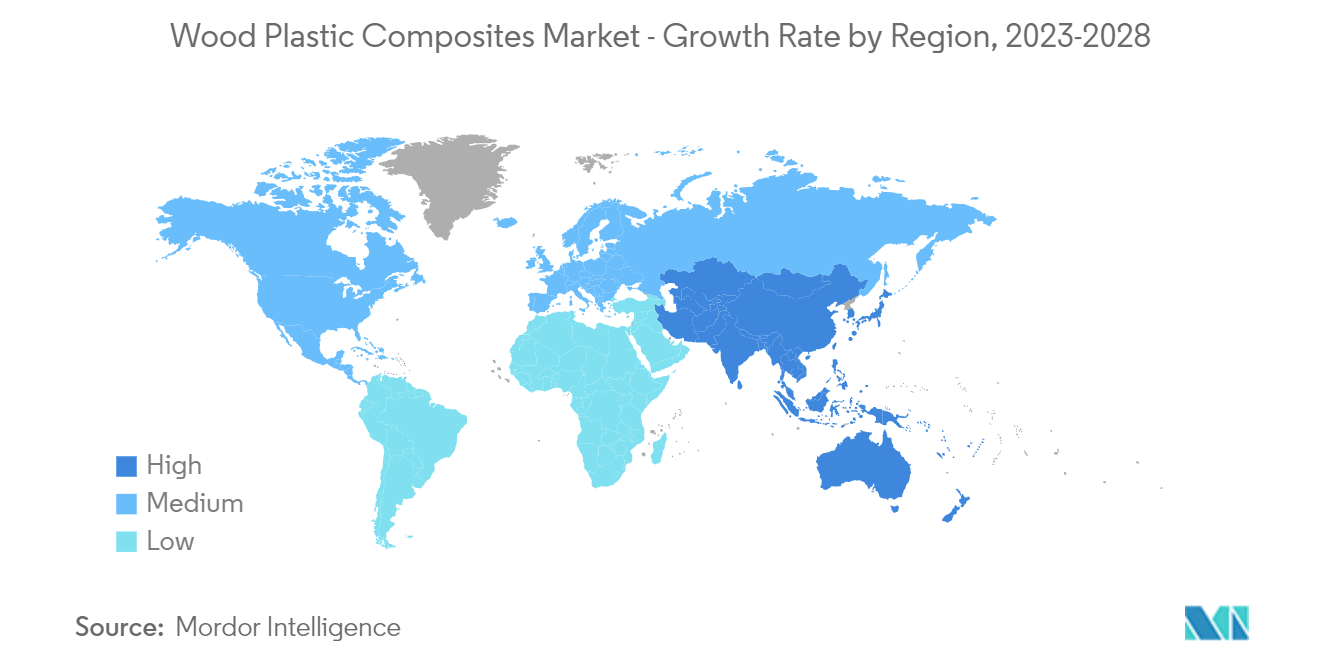Market Trends of Wood Plastic Composites (WPC) Industry
This section covers the major market trends shaping the Wood Plastic Composites (WPC) Market according to our research experts:
Building & Construction Application to Dominate the Market
- Building and construction is the largest application sector for wood-plastic composites (WPC). Being moisture and rot-resistant while retaining their aesthetic quality for longer, wood plastic composites are widely used in decking, moulding and trimming, fencing, landscaping, and outdoor applications.
- Decking is one of the most important applications of WPCs. In construction, a deck is a flat or profiled (anti-slip) surface that is capable of supporting weight. A deck is similar to a floor but is typically constructed outdoors, often elevated from the ground, and usually connected to a building. Wood plastic composite decking can be used in a number of ways, such as part of garden landscaping, the extension of the living areas of houses, an alternative to stone-based features (such as patios), and in residential decks, as well as spaces for cooking, dining, and seating.
- WPCs are soon gaining pace as a vital building material in modern housing and commercial space construction methods, owing to the growing consciousness toward sustainability-driven construction practices. The global construction sector is continuously expanding. As per the World Bank, the total construction spending value is projected to reach USD 19.2 trillion over the next 12 years, which is expected to give an upward push to the studied market.
- China's demographics have triggered investments in affordable residential colonies by both the public and private sectors. As per the National Bureau of Statistics of China, housing starts in China jumped to 85 million sq m in August 2022 from 76 million sq m in July of 2022. Furthermore, China is expected to spend nearly USD 13 trillion on buildings by 2030, creating a positive outlook for WPCs.
- As per the Invest India Report, India's construction industry is heading to reach USD 1.4 trillion market size by 2025 supported by schemes pertaining to the smart city mission targeting the transformation of 100 cities and affordable housing.
- Europe is one of the major consumers of WPCs. According to Eurostat, residential construction alone contributed 7.2% to Germany's GDP in December 2021, the highest share reached in the past decade. The German Federal Statistical Office reported the stock of dwellings at 43.1 million in 2021 in the country, showing an increase of 0.7% (i.e., 280,000 dwellings) from the previous year. The total number of building permits achieved by Germany's construction sector rose consecutively for the third time in 2021, reaching 248,688 units.
- In July 2022, the German government announced its plans to spend EUR 13-14 billion (USD 14.08-15.17 billion) annually in providing subsidies for the renovation of buildings to make them more sustainable.
- Considering all the above factors, the usage and demand of WPCs for building & construction applications are expected to drive up in the forecast period.

North America Region Dominates the Market
- North America accounts for the largest market share of the wood plastic composites (WPCs) market, driven primarily owing to the growing residential and commercial projects in the region.
- The United States flaunts a colossal construction industry. As per the statistics generated by the US Census Bureau, the value of residential construction put in place in the United States was valued at USD 802,933 million in 2021, compared to USD 644,257 million in 2020. Further, the value of total construction put in place till August 2022 surpassed the 2021 figures reaching USD 912,913 million.
- The United States is going massive on home renovations. With the growing population of migrants in the country, the need for renovation has become increasingly important. Also, the growing awareness toward sustainability and high-efficiency structures has created a spur in the restoration trend. The availability of several loans by the government also supports home remodeling in the country.
- There has been a boom in the construction of skyscrapers in Canada (more specifically in Toronto) with over 30 high-rise buildings expected to be completed by 2025. In April 2022, the Canadian government announced its target to double housing construction over the next decade with assistance from the Housing Accelerator Fund of CAD 4 billion (USD 2.99 billion) launched under Budget 2022, which aims to build 100,000 new housing units in the next five years.
- Furthermore, the growth in automotive production and sales in North American countries provides favorable opportunities to the wood plastic composites market. The United States is the second largest automotive manufacturing country in the globe falling only behind China. According to OICA, the automotive production in 2021 accounted for 9,167,214 units, an increase of 4% in comparison to the production in 2020, which was reported to be 8,822,399 units.
- The rising demand for electric vehicles in Canada has propelled the investment in production activities by key automotive manufacturers in the country. In 2021, Ford announced its aim to produce 400,000 electric cars and trucks by 2030 including two to three new battery plants. Ontario and federal governments offered CAD 295 million (USD 219.26 million) to support new EV production at Ford Motor's plant in Oakville, Ontario.

